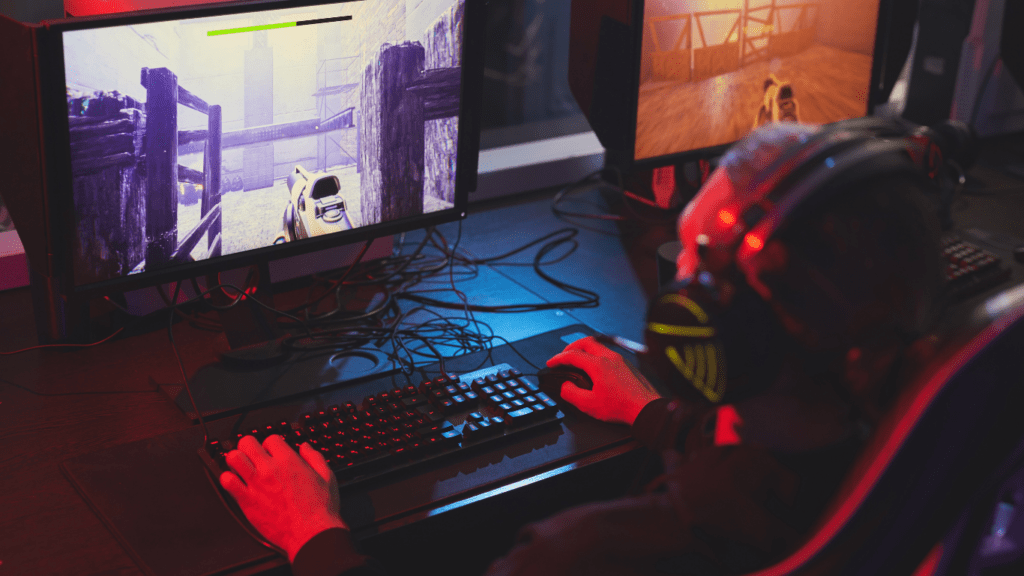Understanding Game Mechanics and Player Experience
The Importance of Balance in Game Design
Balancing game mechanics shapes the player’s experience.
Balanced games offer:
- fairness
- challenge
- satisfaction
An unbalanced game can frustrate players, causing disengagement. Developers need to understand the nuances of balance, making adjustments based on player feedback and data analytics.
Balance impacts replayability. A well-balanced game retains players. They appreciate fair challenges and achievable rewards.
Conversely, imbalance, whether in difficulty or resource allocation, can disrupt immersion. It’s vital to fine-tune elements to attract and retain a diverse player base.
Key Components of Game Mechanics
Game mechanics encompass rules, design elements, and player interactions. Core mechanics include character abilities, resource management, and level design. These components must synergize to provide a seamless experience.
- Character Abilities: Players enjoy using abilities that feel impactful yet balanced. Overpowered or underpowered abilities can skew the game pace.
- Resource Management: Resources like health points, currency, and items must be equitably distributed. This ensures strategic gameplay without tipping the scale unfairly toward any player.
- Level Design: Well-designed levels keep players engaged and appropriately challenged. Each level’s complexity should match the player’s progress, maintaining balance in difficulty.
Incorporating feedback loops helps refine mechanics. Game developers can analyze data from playtesting sessions. Observing how players interact with mechanics reveals areas needing adjustment, ensuring balanced gameplay.
Strategies for Balancing Game Mechanics
Using Player Feedback Effectively
Leveraging player feedback efficiently enhances game balance. Constructive critiques can pinpoint mechanics that disrupt gameplay, helping developers make precise adjustments.
Collect feedback through forums, surveys, and social media to understand players’ perspectives on game balance.
Analyzing trends in the feedback helps identify recurring issues and prioritize fixes.
For example:
- Forums: Look for common themes in player discussions.
- Surveys: Ask specific questions about game mechanics.
- Social Media: Monitor comments and messages for insights.
Transform feedback into actionable data.
Use it to adjust parameters like character abilities or resource availability. Ensure changes align with the overall design intent, maintaining game integrity.
Iterative Design and Testing Processes
The iterative design process refines game balance.
Each development cycle should include designing, testing, and tweaking based on results. This approach ensures continuous improvement and adaptation to player needs.
Key steps:
- Prototyping: Create initial versions of mechanics.
- Playtesting: Conduct sessions with diverse player groups.
- Feedback Analysis: Assess playtesting data to identify imbalances.
- Refinement: Make adjustments and retest.
Iteration cycles reduce the likelihood of major imbalances at launch.
Frequent testing and feedback loops help create a smoother, more engaging player experience. Refining mechanics through iterative processes fosters a well-balanced game that appeals to a wide audience.
Case Studies of Successful Balance in Video Games

Examples from Popular Games
- League of Legends: Riot Games employs a dynamic balance strategy using regular updates and community feedback. Each patch aims to adjust heroes’ power to ensure no single character dominates, enhancing overall gameplay diversity.
- Overwatch: Blizzard consistently tweaks character abilities and skills. With a focus on competitive balance, they use advanced telemetry and player feedback from competitive and casual modes to fine-tune the game.
- Dark Souls: FromSoftware delivers a meticulously balanced combat system where every weapon and enemy has clear strengths and weaknesses. Players engage in strategic combat, requiring skillful execution to progress.
Analysis of Balancing Techniques Used
- League of Legends: Riot applies a mix of quantitative data and qualitative feedback, creating a robust patch cycle. Detailed telemetry data on in-game performance aids in making informed decisions on buffs and nerfs.
- Overwatch: Blizzard uses an internal testing environment and player data from various match types. They consider hero pick rates, win rates, and player sentiment to identify and address balance issues.
- Dark Souls: FromSoftware focuses on risk-reward mechanics in combat, ensuring each weapon and enemy interaction maintains challenge without feeling unfair. Player feedback and internal testing tweaks the difficulty curve, providing a satisfying challenge.
These case studies illustrate successful strategies for balancing game mechanics, ensuring fair, challenging, and satisfying player experiences.
Challenges in Balancing Complex Games
Balancing complex games involves intricate challenges that demand a nuanced understanding of game mechanics, player behavior, and evolving meta-game dynamics.
Developers must navigate these challenges to craft engaging and fair experiences.
Balancing for Different Skill Levels
Games attract players with varied skill levels. Balancing for such a diverse audience is a significant challenge.
Developers aim to provide an enjoyable experience for both novices and veterans.
They can create scalable difficulty settings to help balance the experience across different skill levels. For instance, in “Fortnite,” Epic Games uses skill-based matchmaking to pair players of similar skill levels in the same match.
This approach ensures that beginners aren’t overwhelmed while still providing a challenge for seasoned players.
To achieve balance, developers can also introduce adaptive AI.
This type of AI adjusts the difficulty based on player performance.
If a player is performing well, the game might increase the challenge by making enemies tougher. Conversely, if a player is struggling, the game can scale back the difficulty to help the player progress.
Maintaining Engagement Over Time
Long-term player engagement is crucial for the success of any game.
Developers face the challenge of maintaining balance while keeping the game fresh and exciting. Regular updates and content patches play a vital role in achieving this.
In “League of Legends,” Riot Games frequently releases patches that adjust character abilities and introduce new content.
These updates prevent the game from becoming stale and address balance issues, keeping the gameplay dynamic.
This strategy helps retain the player base by consistently offering new challenges and experiences.
Seasonal events and limited-time modes are other tools developers utilize to maintain engagement. By introducing new modes and rewards, players are encouraged to return and experience fresh content.
For example, “Overwatch” regularly launches seasonal events with unique game modes and exclusive items, keeping the player base active and invested.
Balancing complex games requires careful analysis and iterative design. By addressing skill disparities and continuously providing new content, developers can optimize player experience and ensure long-term engagement.


 Darcy Cazaly is a key contributor at Infinity Game Saga, where he brings his expertise to the world of gaming journalism. As a dedicated member of the team, Darcy focuses on delivering in-depth articles and insightful analyses that cover a broad range of topics within the gaming industry. His work includes exploring the latest trends, dissecting game mechanics, and providing thorough reviews of new releases.
Darcy's commitment to high-quality content ensures that readers receive accurate and engaging information about the evolving gaming landscape. His writing not only informs but also enriches the gaming experience for the community, offering valuable perspectives and up-to-date news. Through his contributions, Darcy helps bridge the gap between gamers and the dynamic world of gaming technology and trends, making him an essential part of the Infinity Game Saga team.
Darcy Cazaly is a key contributor at Infinity Game Saga, where he brings his expertise to the world of gaming journalism. As a dedicated member of the team, Darcy focuses on delivering in-depth articles and insightful analyses that cover a broad range of topics within the gaming industry. His work includes exploring the latest trends, dissecting game mechanics, and providing thorough reviews of new releases.
Darcy's commitment to high-quality content ensures that readers receive accurate and engaging information about the evolving gaming landscape. His writing not only informs but also enriches the gaming experience for the community, offering valuable perspectives and up-to-date news. Through his contributions, Darcy helps bridge the gap between gamers and the dynamic world of gaming technology and trends, making him an essential part of the Infinity Game Saga team.
